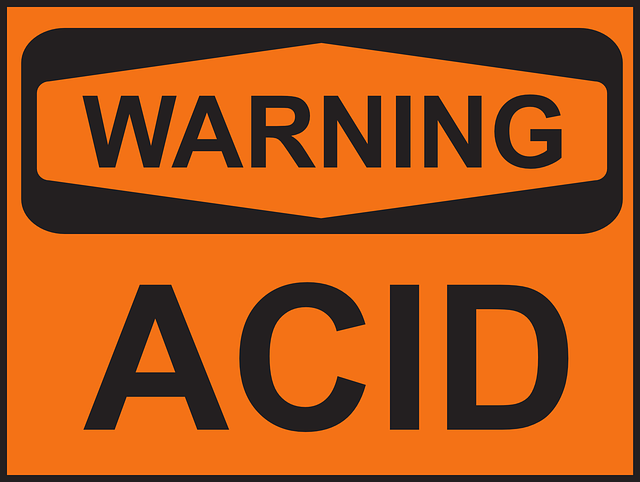
What is the pH of Coffee?
Share
If you're someone who suffers from acid reflux, you probably already care about the acidity of your food.
If that's not your situation, we're here to tell you you should also consider the acidity of your coffee, as it can significantly affect your health and well-being.
We've covered low-acid coffee before, but a general understanding of coffee pH levels and how they affect the taste of your morning cup are an essential part of every coffee enthusiast's education.

Quick Sips
-
pH stands for "potential of hydrogen" and refers to how acidic or alkaline your coffee is. Higher acidity means tanginess and bitterness, whereas reducing acidity gets you a more well-rounded coffee.
-
PH ranges from 0 to 14 (0 being the most acidic, like battery acids). Water has a pH of around 7, while coffee pH usually ranges from 4.5 to 6.
-
Brewing methods that maximize steeping time reduce the acidity level in coffee. Picking coarsely ground beans helps with this as well. Cold brewing is the best method for minimal acidity in coffee but takes around 24 hours to brew.
- Darker roasts like our Philly French Roast, typically have less acid.
What is pH?
PH stands for "potential of hydrogen," and measures the concentration of hydrogen ions in any given solution. It's generally presented as a scale that ranges from 0 to 14, with each step representing a tenfold change in the ion concentration.
As the score gets lower, we say the solution gets more acidic. Here, "solution" is just a fancy word for liquid. As it goes up, we say the solution is more alkaline, the opposite of acidic. So, a pH of 4 is ten times more acidic than a pH of 5.
So what does this all mean in layman's terms?
More acidic liquids taste sour (think of lemon juice or vinegar), while alkaline liquids taste bitter and soapy. Water has a pH of 7, meaning it's neutral, and (ideally) shouldn't taste funny.
pH Examples
Plain black coffee often falls a bit on the acidic side — something easy to notice when comparing it side by side with pure water. To put coffee's pH in perspective, consider these common substances:
-
Black Coffee: pH of 4.5 to 6.0
-
Lemon Juice: pH of 2.0 to 3.0
-
Milk: pH of 6.5 to 7.0
-
Baking Soda Solution: pH 9.0 to 10.0
If you've ever taken a sip of a specialty coffee and felt a sudden tangy feeling in your mouth, you probably tasted a low-pH brew!
A Guide to Coffee Acidity
Why do people worry about the pH of coffee? Well, your body has a natural pH level of around 7 — just like water. There's a general understanding that eating things with super low or high pH levels can negatively impact your health. For instance, you probably don't want to be drinking pure lemon juice all day.
The pH of a healthy stomach, which relies on gastric acid to digest food, is typically between 1.0 and 3.0 when a person is fasting. This can rise to 6 depending on the amount and types of food you've eaten.
However, coffee drinkers should care about coffee acidity for a few extra reasons.
Flavor and Taste
Acidic coffee tastes bright and tangy, while more neutral coffee tends to be smoother and robust. While coffee has many acidic compounds, the one that we "feel" the most is citric acid, which is more prevalent in greener roasts.
Low-acid coffee can also hide some of the spicier notes in coffee, especially those reminiscent of fruity flavors. That's because when you get that orangey aftertaste with coffee, it's generally citric acid.
Health Factors
Many people are susceptible to acid reflux, or simply have a thin stomach lining. Acid reflux or heartburn is when the contents of your stomach move up your esophagus and you feel the acid in your throat... yeah, not something you want to happen during a meal.
People who often experience acid reflux might want to opt for darker roasts, as acids decompose at the high temperatures associated with darker coffee beans and darker roasts.
It's also true that drinks that score low on the pH scale can erode your tooth lining over time. While this isn't something to panic about, it's certainly a factor to consider if you drink many acidic cups every day.

What Affects Coffee pH?
So is coffee acidity something we can control? Turns out yes, and it's actually really easy. Let's see how.
Choose the Right Coffee Beans
The type of coffee beans is the main factor here, as different varieties will have a different pH value. This is due to the inherent properties of the plant and also of the environment where the coffee beans are harvested around the world.
For example, robusta coffee beans tend to be more acidic than arabica beans, as they naturally develop more organic acids. We use Arabica coffee beans!
As a rule of thumb, coffee beans harvested from a growing region with high elevation tend to be more acidic, too.
Grinding and Roasting process
Coffee acidity also changes with grinding and roasting. We won't be talking about pre-ground coffee beans here, although the same applies to them.
Coarse-ground coffee beans will almost always yield a lower-acid coffee regardless of their variety. This is because as the particle size increases, the hot water finds it more difficult to extract all the organic acids into the hot water.
Also, because acids degrade under high temperatures, a light roast will generally increase your coffee's acidity. So if you love high-acid coffees, make sure to start with green coffee beans, a light roast, and grind them finely.

Brewing method
Any coffee enthusiast drinking coffee on the regular knows that the way you treat your brew will affect not only the acidity of coffee but also its flavor profile. The regular coffee you're accustomed to is probably either instant coffee grounds or an espresso, both of which tend to be high in overall acidity.
Generally speaking, brewing at higher temperatures increases the acidity of coffee. Coffee acidity also correlates negatively with brewing time. So a ranking of the most popular brewing methods with regard to coffee acidity would look like this:
-
Espresso: combines high pressure with a super fine grind and a short extraction time, resulting in a slightly more bitter and high acidity coffee.
-
Aeropress: the way most people use an Aeropress, it's quite similar to an espresso except for a slightly longer brewing time, which changes the coffee flavor, generally making it less bitter.
-
Pour-over: with this method you can control the water's temperature as well as the extraction time of each particular coffee cup you make, meaning you get to choose how acidic it turns out.
-
French Press: the coarse grind and longer steeping time combine, reducing the coffee acidity levels of this cup.
-
Drip Coffee: drip coffee often takes a while to brew and uses a medium grind, yielding a coffee acidity similar to the French press.
-
Cold Brewing: studies have shown that cold brewing reduces the acidity in coffee, but it doesn't extract as many of the beneficial nutritional compounds in coffee. Find some cold brew here.
Low-Acid Coffees
So, we've already talked about what to do to maximize your coffee's acidity level, but how can coffee drinkers with susceptible stomachs enjoy coffee then?
Well, coffee professionals will recommend a dark roast, like Philly Fair Trade's Costa Rica coffee. Additionally, choosing a brewing method that maximizes steeping time would be smart.
But there's one method that beats them all...
Cold Brew Coffee
Want to reduce acidity in your coffee? Take coarsely ground coffee beans, put them in cold water for 12 to 24 hours (ideally in the fridge), then filter and heat it up or just serve it with ice.
Unlike most coffees, cold brew uses time and not heat to extract the good stuff from the beans. This results in a coffee that has low acidity levels and zero tanginess.
Cold brew also extracts fewer oils and distributes them evenly throughout the cup. This helps your stomach acid deal with the drink, helping fight against acid reflux.
For making your own cold brew, we recommend our Mexico beans.
In a hurry and want some canned cold brew that's ready when you are? We've got that right here for you!
